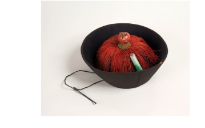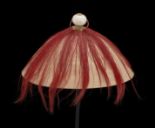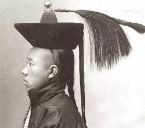Hats are fundamental
This hat belonged to a Qing mandarin. During the Qing dynasty (1636-1912) there was a great variety of hats. They were a major part of the Qing dress code. Apart from practical functions such as warmth or shade, hats also had other functions.
On top of all the different hats, a variety of decorations such as feathers, buttons and pearls emphasized the distinctions between ranks and prestige. For men, the hat was a physical representation of the person himself; everyone was able to see exactly what function he performed. All the hats and their purposes were recorded, so as to avoid any misunderstandings. This is a mandarin hat that was worn during summer. It is the main character of this story. This hat is from the early twentieth century. That is why this story is larded with bits and pieces from Der Ling's Two Years in the Forbidden City in which she recorded her many observations at the Summer Palace at Beijing serving Empress Dowager Cixi.












